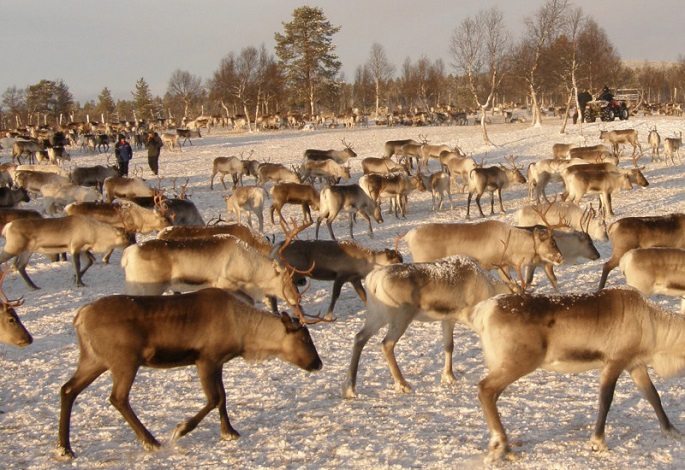Reindeer husbandry loses slight profitability
Published : 04 Jun 2019, 03:02
Updated : 04 Jun 2019, 11:01
Reindeer husbandry has turned slightly less profitable following a few years of positive growth.
According to the Natural Resources Institute Finland (Luke), the profitability factor of reindeer husbandry declined to 0.4 over the 2017/2018 herding season from the previous corresponding season’s 0.57.
On average, total returns from the venture were EUR 40,980. The majority of returns came from meat sales. The price of reindeer meat remained at the previous year’s level and there was no major change in the sales volume of meat. As a result, sales gains remained at EUR 19,400.
Compensation for work paid by reindeer herders’ cooperatives increased by 17% from the previous season's EUR 5,880. Correspondingly, compensation paid for traffic and predator incidents involving reindeer reduced from the previous season's EUR 8,600 to EUR 7,600. Subsidies account for roughly 14% of total returns on reindeer husbandry.
During the 2017/2018 herding season, production costs increased by 11% to EUR 53,300. Of different cost items, feed costs rose by one third. Herding and equipment costs as well as management fees paid to reindeer herders’ cooperatives increased, too. Production costs excluding the salaries of entrepreneur families and return on equity were EUR 30,600.
“The increase in the price of purchased feed partly explains the increase in feed costs. In addition, during the 2017/2018 herding season, the summer was rainy and the spring came late. The harvested feed yield was poor, which is why herders needed to purchase their feed from other sources,” said Marja Vilja, a research scientist at Luke.
On an average, entrepreneur families allocated 1,270 hours a year to reindeer herding. Of these working hours, roughly 40% are carried out for reindeer herders’ cooperatives. The average equity of reindeer husbandry enterprises was EUR 87,700. The equity ratio, i.e., the ratio between equity and total capital, was 90%. The number of reindeer left alive rose from the previous season by five to 197.
Entrepreneurial income is calculated by deducting fixed and variable costs and depreciation from total returns. This is the amount of compensation received by entrepreneurs for their input and the amount of interest paid on invested capital. The average entrepreneurial income was EUR 9,000, down by 30% from the previous year.
Average production costs per kilogram of meat was EUR 24.7. Returns did not cover all production costs in any region. Of the total costs, costs paid in cash made up for approximately half, while the other half comprised calculated costs, including depreciation and costs arising from equity and work.


